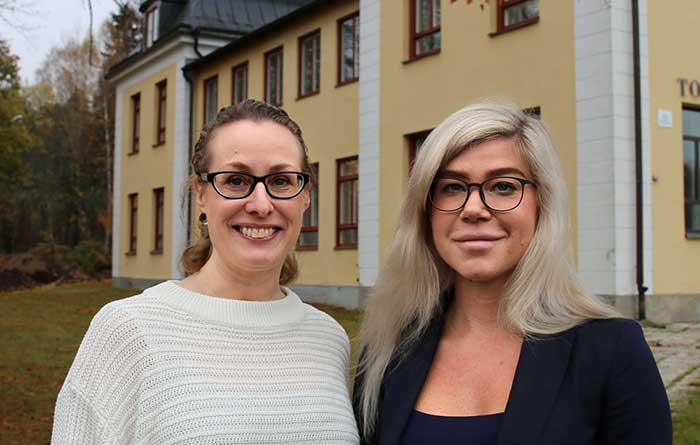How does distance work affect us?

Working from home can be both comfortable and practical. But it might not be very healthy. Perhaps it is harder to finish working when you don’t have to leave a physical workplace at the end of the day.
As the proportion of distance learning at universities increases, new research is in demand to inform us about what the conditions of working from home are. This forms part of PhD student Linda Rickardsson’s dissertation project.
Nice to work from home
Distance working means that you work from some other place than your workplace. Often, it means that your work from home.
Most distance workers can most probably be found among academic staff at universities. The reason for this situation is not least because in this profession you work in an organisation with an especially permissive attitude. As a teacher in academia, you have great opportunities to decide over you own working situation and, as a result, over you own work environment.
“If you are grading exams, it can feel as if it is a good choice to do it at home. Moreover, with today’s technical opportunities, you can also carry out your teaching from home, if you teach distance courses,” says Marina Heiden, researcher at the Department of Occupational and Public Health Sciences, who supervises Linda Rickardsson.
Employer remains responsible
Working from home is nothing new. However, nowadays the Swedish Work Environment Act states that “Technologies, the organisation of work and the content of work must be designed in such a way that the employee is not subjected to physical strain or mental stress that may lead to illness or accidents.”
Employers remain responsible for the work environment, regardless if the work is performed at the main workplace or in any other place, for instance in the employee’s home. However, the employees should always cooperate in creating a good work environment.
Harder to finish
One of the issues the researchers take as their starting point, to mention something concrete, is that it may be harder to shut down your computer and finish for the day when you work from home and doesn’t have to leave your workplace. However, the main subject for the project is wider and focuses on how working from home affects us physically.
“The project consists of four parts. In the first part, we will conduct a survey involving 500 lecturers, senior lecturers and professors who we will ask to respond to questions about their health, balance between work and free-time, work motivation and how much distance work they do.”
Why the project only targets those who teach at universities is because their work tasks and responsibilities are very similar. Moreover, in this profession people generally have great opportunities to choose for themselves how and where to perform their work.
Measurements
“In the second part, we perform physical measurements. We will make our participants wear a certain device for a week. We will select a week when the individual in question will work both from home and at the workplace in similar proportions.”
The device is called an accelerometer and consists of small sensors that will be fitted on their bodies. Several times a second, these sensors will register how the participants move and their positions, for instance if they are walking, sitting or standing, the angles of their arms and legs in relation to the dropline of the body etcetera.
“In addition, we will measure the participants’ pulses via electrodes that will be fitted to their upper bodies, and via saliva tests we will measure cortisone levels to determine stress levels,” Linda Rickardsson tells us.

Marina Heiden och Linda Rickardsson
Distance work is here to stay
Distance work show no signs of decreasing, quite the opposite. For this reason, it is important to determine what the preconditions are and what the consequences may be.
“When you start to make higher demands on the work environment, it may be important to have these kinds of studies to rely on,” Marina Heiden says.
Linda herself lives in Malmö, and works from home a week now and then, and she experiences a difference in the way you sit and in the technical equipment. What is more, Linda underlines that the absence of colleagues can be very uninspiring, which may affect work motivation.
Parts three and four of the project will consist of in-depth interviews with the participants as well as with their managers, who, for instance, will be asked about what it is like to lead individuals who physically are somewhere else.
“The goal is to develop recommendations that will work for everyone in these professions,” Linda Rickardsson concludes.
Text & photo: Ove Wall






 Skriv ut
Skriv ut
 Utskriftsversion
Utskriftsversion
